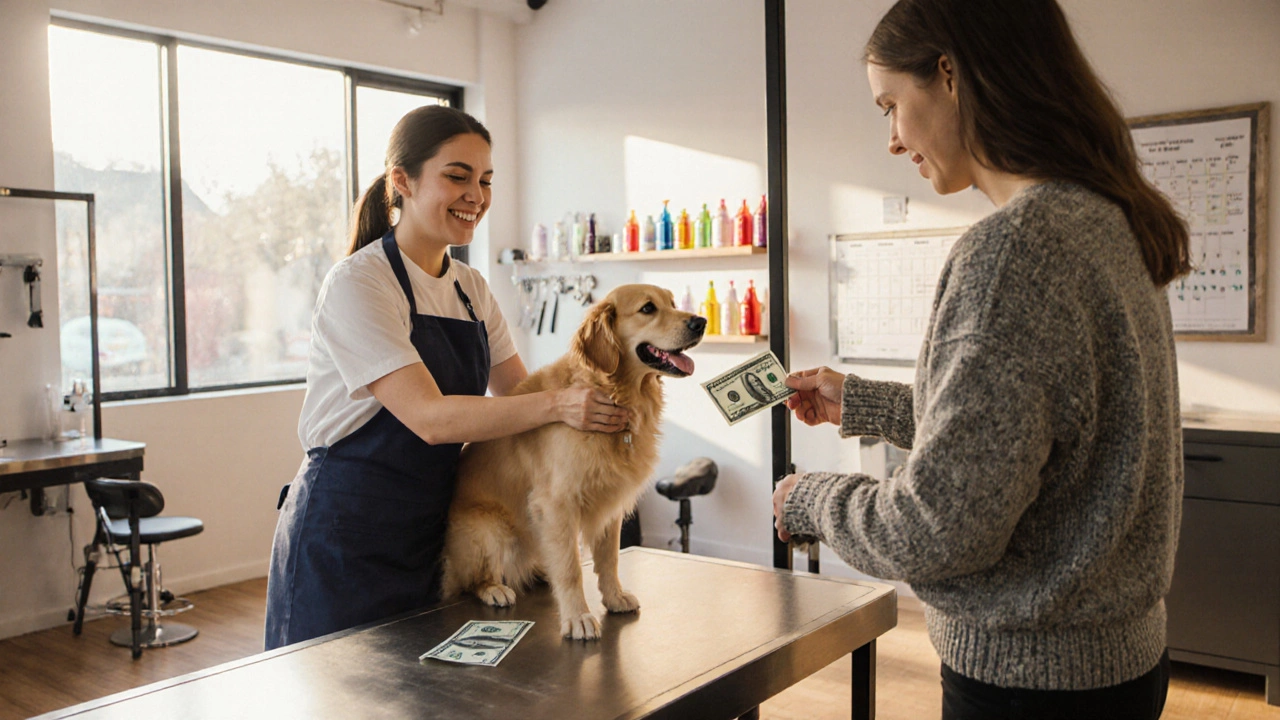Tip Percentage Grooming: Calculating the Right Tip for Your Groomer
When talking about Tip Percentage Grooming, the practice of deciding how much money to add as a tip after a pet grooming service. Also known as grooming tip, it helps reward skilled groomers and supports a fair industry. Understanding the basics lets you feel confident about the amount you leave, whether the session costs £30 or £120. Tip Percentage Grooming is more than a polite gesture; it reflects appreciation for time, expertise, and the extra care many groomers provide.
Why the Tip Matters in Dog Grooming
One key related concept is dog grooming, the regular cleaning, trimming, and styling of a dog's coat and paws. Groomers often spend hours bathing, drying, and styling a single pet, especially breeds with thick or double coats. When you tip appropriately, you acknowledge the physical effort and the knowledge required to keep a dog's coat healthy. A common rule of thumb is 10‑15% of the total bill, but many owners adjust based on service complexity, extra calming aids used, or special requests.
Another frequent topic in the tag collection is calming aids, products or techniques that reduce a dog's anxiety during grooming. Groomers may use pheromone sprays, calming treats, or gentle music to keep a nervous pup relaxed. When such aids are employed, the overall service value rises, and a higher tip can reflect that added care. Knowing that calming aids are part of the package helps you decide if a 20% tip feels right for a particularly stressful session.
Service scope also ties into groomer services, the range of tasks a professional pet groomer offers, from basic baths to full breed‑specific cuts. A simple wash may merit a modest tip, while a full breed‑specific clip, nail trim, and ear cleaning package commands more appreciation. By matching tip percentage to service depth, you create a transparent way to reward quality without guessing.
Frequency of grooming is another factor that influences tipping habits. According to posts like “How Often Should You Groom Your Dog Each Year?”, many owners schedule sessions every 6‑8 weeks for high‑maintenance breeds. Regular clients often develop a rapport with their groomer, making a consistent tip percentage a sign of loyalty. If you’re a first‑time client, you might start with the standard 10% and adjust upward as you see the groomer’s skill and the extra steps they take.
Pet grooming etiquette also shapes tip expectations. Respectful behavior—arriving on time, providing clear instructions, and handling your dog calmly—makes the groomer’s job easier. When you combine good etiquette with a fair tip, you reinforce a positive cycle: groomers feel valued and are more likely to go the extra mile on future visits. This dynamic is highlighted in articles about “Do Dogs Cry During Grooming?” where a calm dog often results in a smoother session and a happier groomer.
Putting these ideas together, you can create a simple tip calculator: take the total cost, add 10% for a basic service, bump to 15% if calming aids were used, and consider 20% for complex breed‑specific cuts or multiple dogs in one visit. This approach gives you a clear, consistent method that respects both the groomer’s effort and your budget. Below you’ll find a range of articles that dive deeper into grooming frequency, calming aids, and best practices for pet grooming etiquette, helping you fine‑tune your tip strategy and enjoy stress‑free grooming sessions.
Is $20 a Good Tip for a Groomer? How Much to Tip Your Pet Groomer in 2025
Find out if $20 is a fair tip for a pet groomer, learn tip percentages, factors that affect gratuity, and get a quick checklist for grooming tips.
